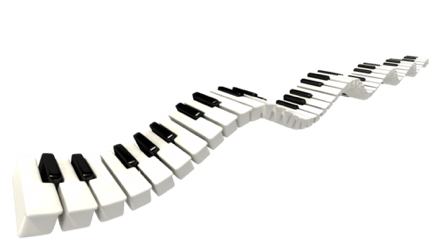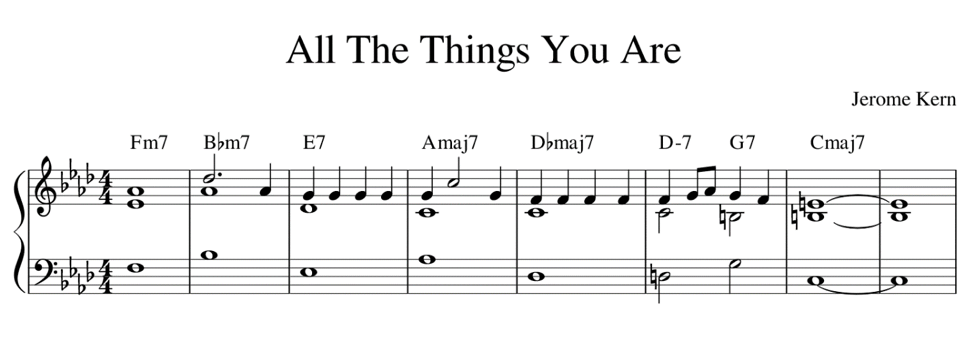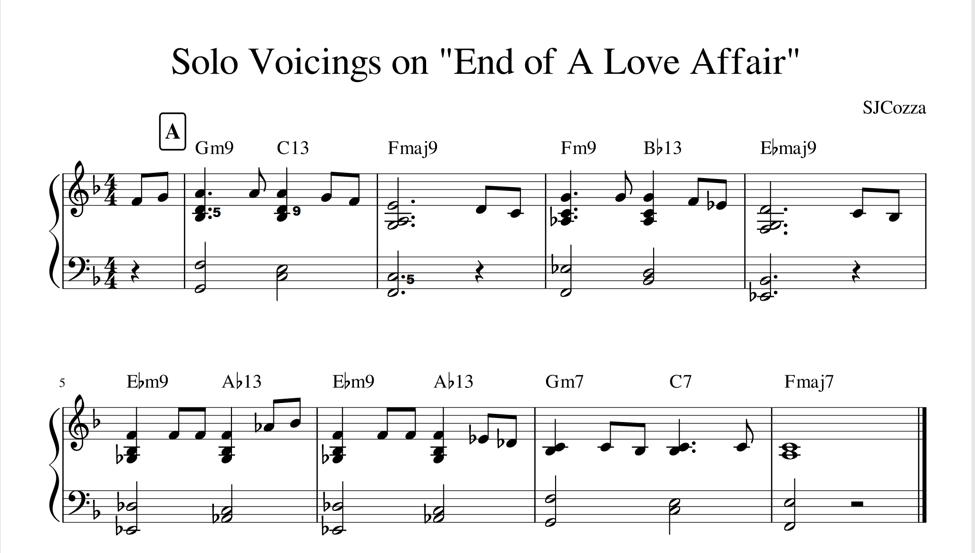Some people ask us jazz pianists:
“How do you know what notes to play?”

Other times, I am reading a lead sheet and they ask,
“If there’s only one line on the page, where do the other notes come from?”
This is where our secrets lay. With all but one note and a chord symbol, we have all the information necessary to create some beautiful sounds at the keyboard.

Some people begin at the finish line and look up fancy chords in tutorial videos or books of “jazz piano voicings.”

Starting with voicings like this can be a quick way to find some new sounds, but leave the player lacking a few key elements:
- How voicings are made
- Musical context
What Makes Good Voicings?
Voicings are made up of 4 things:
- Melody
- Harmony – 3rd and 7th
- Bass
- Color – Extensions (9th, 11th, 13th + alterations)

Revisiting the above example, we can see where the root, 3rd, and 7th are distributed within the voicing. Where does our melody note come from? We don’t know. The chord sounds good, but this is simply a cut-and-pasted voicing with no musical context.
Let’s look at some basic voicings for Jerome Kern’s classic standard, “All the Things You Are.” This melody is made up of mostly chord tones, and is very conducive to making good voicings.

Notice how each voicing includes a 3rd and 7th from each chord. This gives each one a complete sound. Incidentally, the melody of this tune is made up of almost exclusively 3rd and 7th chord tones.
And what happens when the melody occurs on other chord tones? Take a look at this example from “The End of a Love Affair.”
Notice how each voicing includes a 3rd and 7th from each chord. This gives each one a complete sound. Incidentally, the melody of this tune is made up of almost exclusively 3rd and 7th chord tones.
And what happens when the melody occurs on other chord tones? Take a look at this example from “The End of a Love Affair.”

This melody highlights the upper extensions of the chords, evident in the chord symbols such as Gm9, C13, and Fmaj9.
These solo voicings include:
- The melody
- The bass note of each chord
- The 3rd and 7th of each chord
They go a step further by adding color notes such as the 5th in the first chord, the 9th in the second chord, and the 5th in the 3rd chord.
To tie it all together…
Notice how the melody of each of these tunes shapes the individual voicings we choose to use. As pianists, we have to be flexible and have many tools at our disposal. Understanding these guidelines for how to make your own voicings can help you to play any tune put in front of you with ease, and develop your own individual sound in the process. The possibilities are endless!












